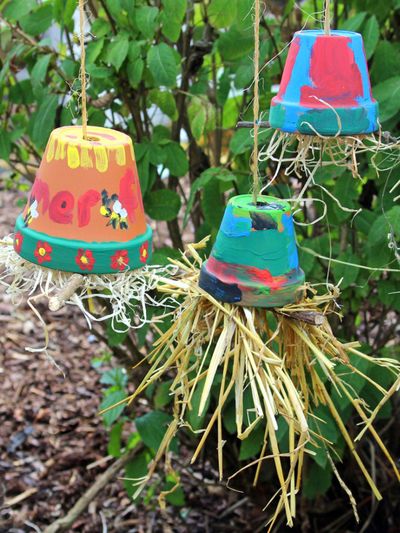Learn how to make an earwig trap and keep your plant’s young shoots safe from the insect’s voracity here.
Earwig Trap Ideas
In most cases, earwig damage to plants is minimal. However, if you have an infestation, throw together a flowerpot earwig trap or other snare. Earwig trap ideas are not only quickly assembled but usually made from common items in the home. If you have ever had a piece of wood or plastic laying out in the soil overnight, you will likely see earwigs on the contact side in morning. The nocturnal nibblers seek out refuge in dark, cooler locations to while away the day. This gives a clue on how to make an earwig trap. First, recognize that you have a problem. Earwigs eat annoying pests like aphids but may also attack tender shoots of plants like dahlias. Jagged leaves with small holes may signal that earwigs are attacking your plants. If you don’t have chickens, which will feed on earwigs, it’s time to make an earwig hotel.
Flowerpot Earwig Trap
A simple trap is to use a flowerpot. Select one with fairly straight sides and a drainage hole. Fill the pot with shredded or crumpled newspaper or straw. This will provide an attractive habitat for the earwigs. Next, position the pot so the top is upside down and push a stake up thought the drainage hole to support the whole contraption. You can also suspend the pot with twine upside down near fruit trees to attract the earwigs and avoid damage. Remove the traps daily and either relocate the insects or dump them in soapy water.
Other Earwig Repelling Ideas
Another way of using the flowerpot is to plug any drainage holes and bury it with the rim at soil level. Fill with some oil and add some tuna juice, soy sauce, or other attractant. Refill as needed. The earwigs will not be able to get out because of the oil.
Outside of the flowerpot method, you could also use sticky traps. You can purchase these or make your own.
Roll up sheets of newspaper and place them between plants. In the morning, earwigs will be hiding inside. Lay a sheet of cardboard over the soil and collect earwigs the next day.
To just prevent earwigs from getting at sensitive plants, spread a layer of diatomaceous earth around the garden bed.
Encourage a bird friendly garden and use these natural predators to minimize the presence of earwigs.
